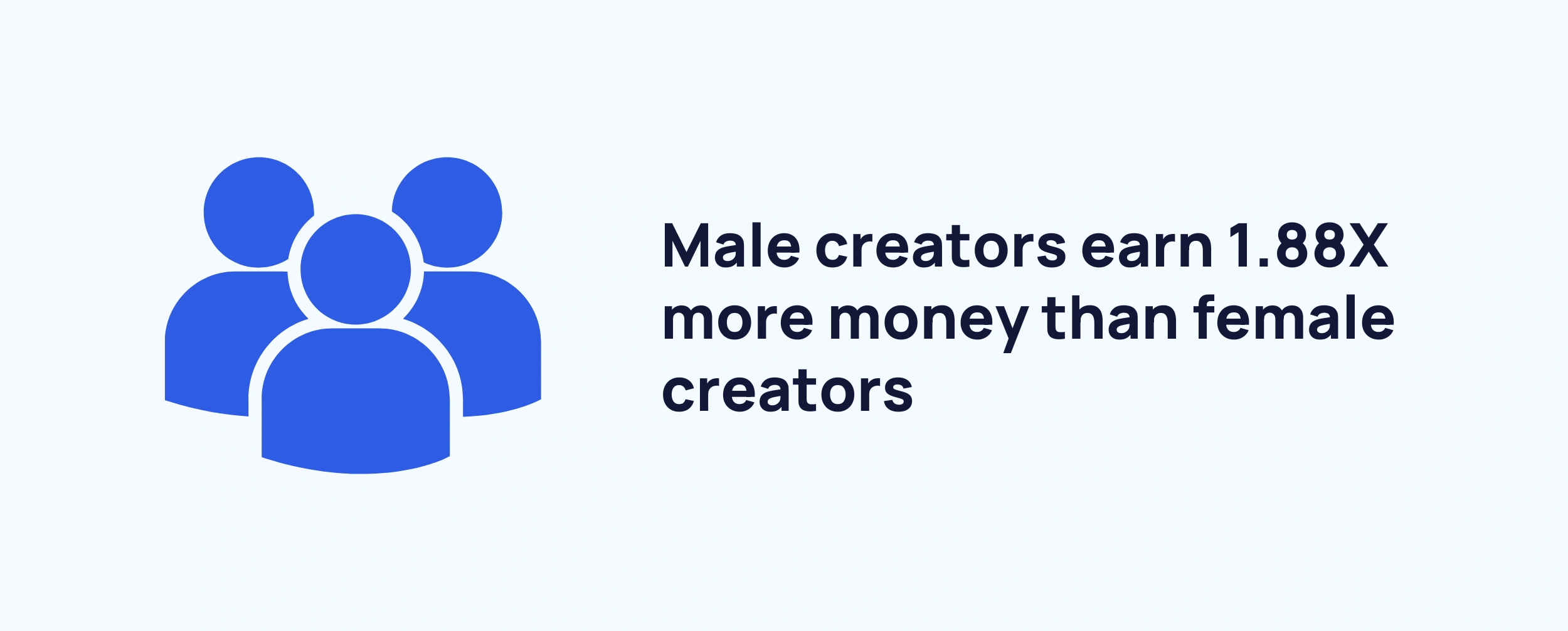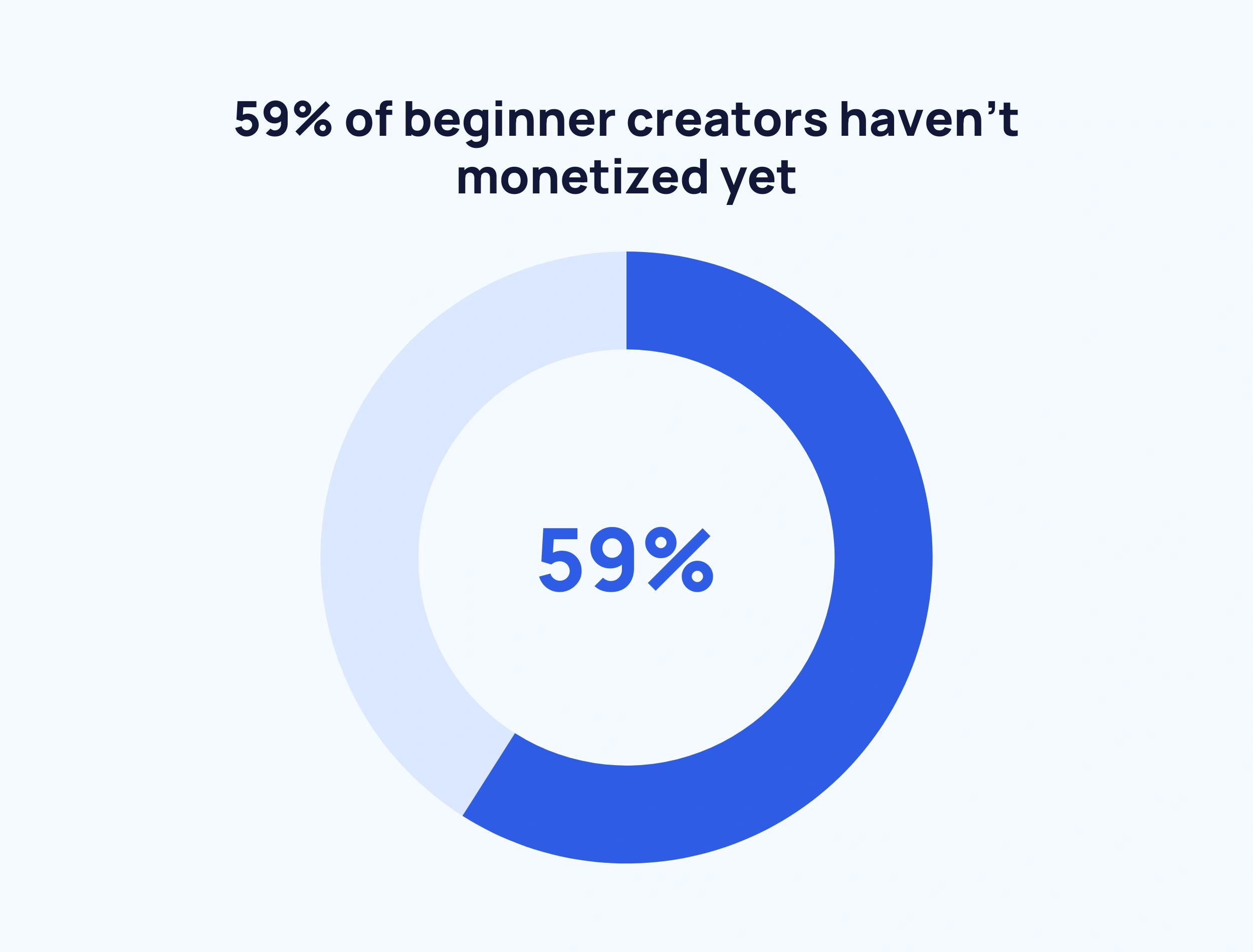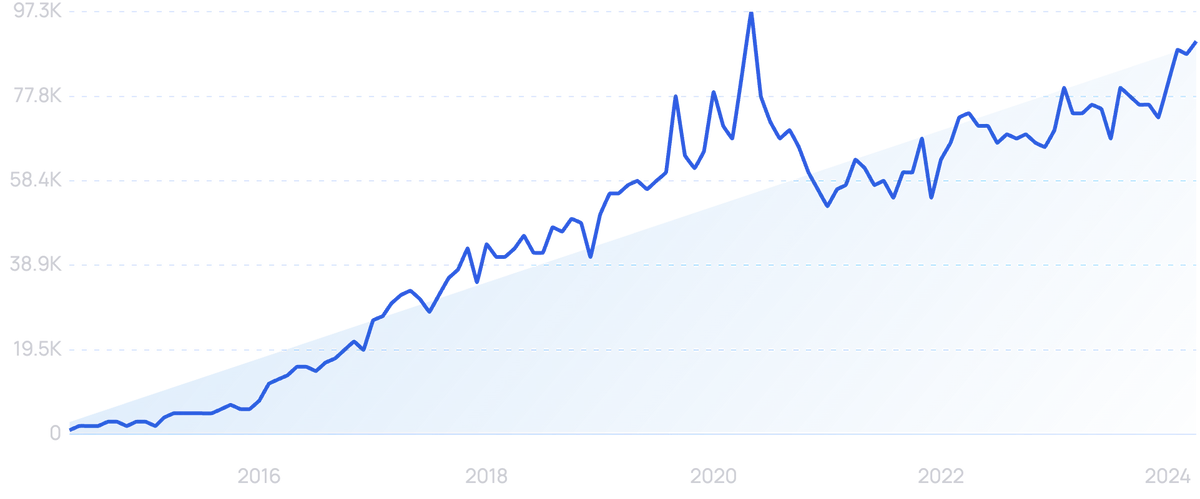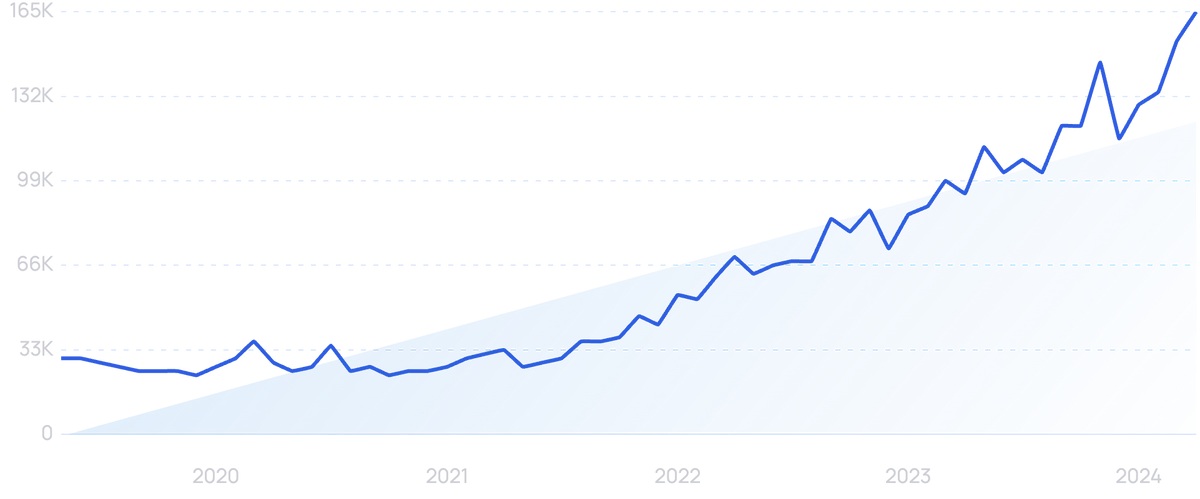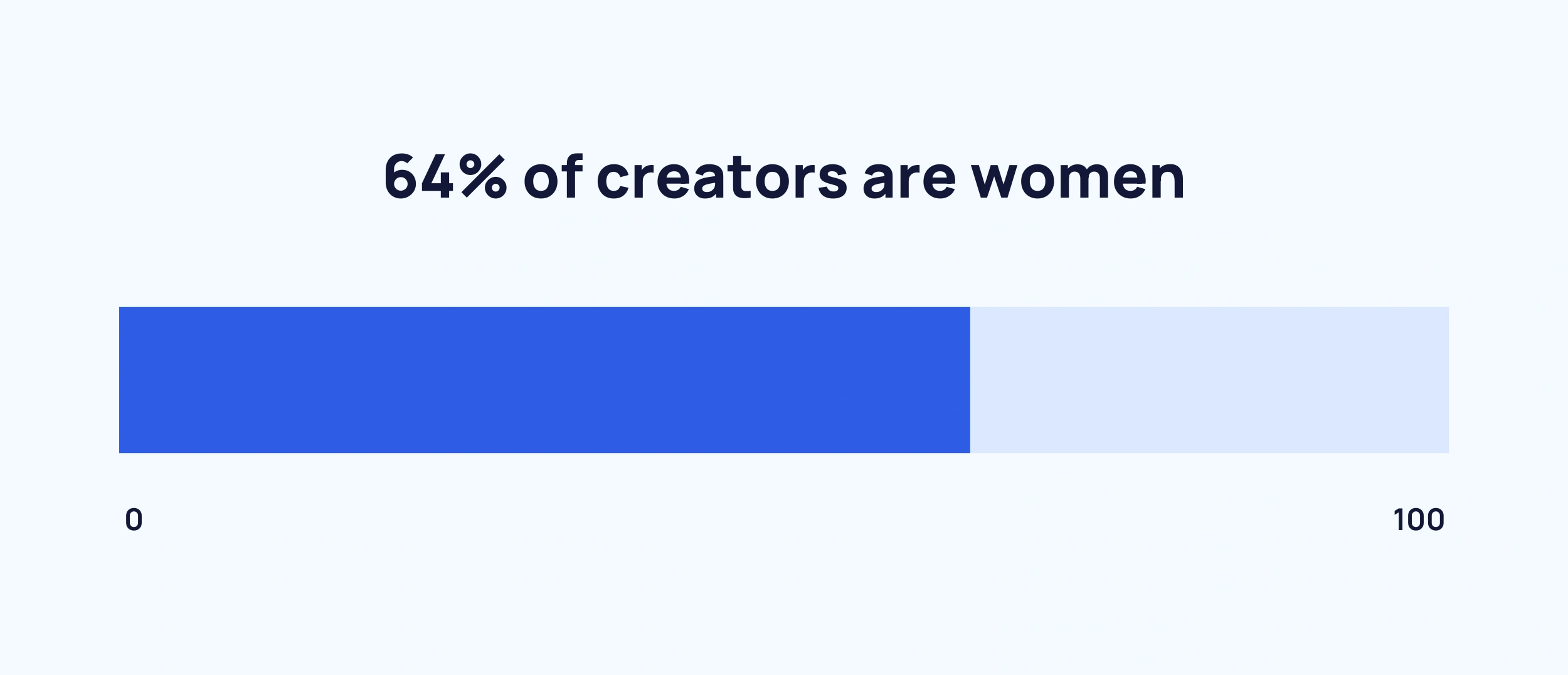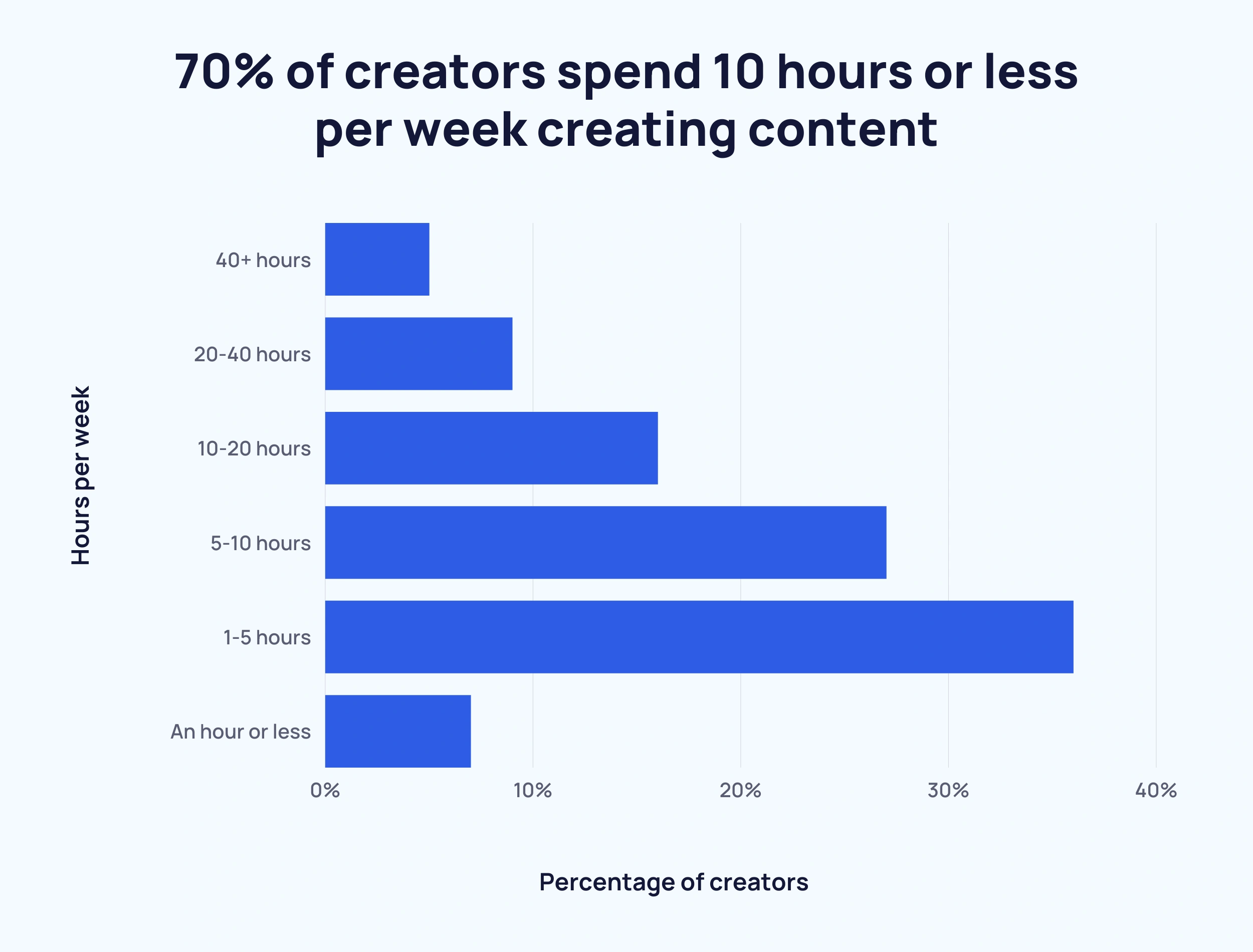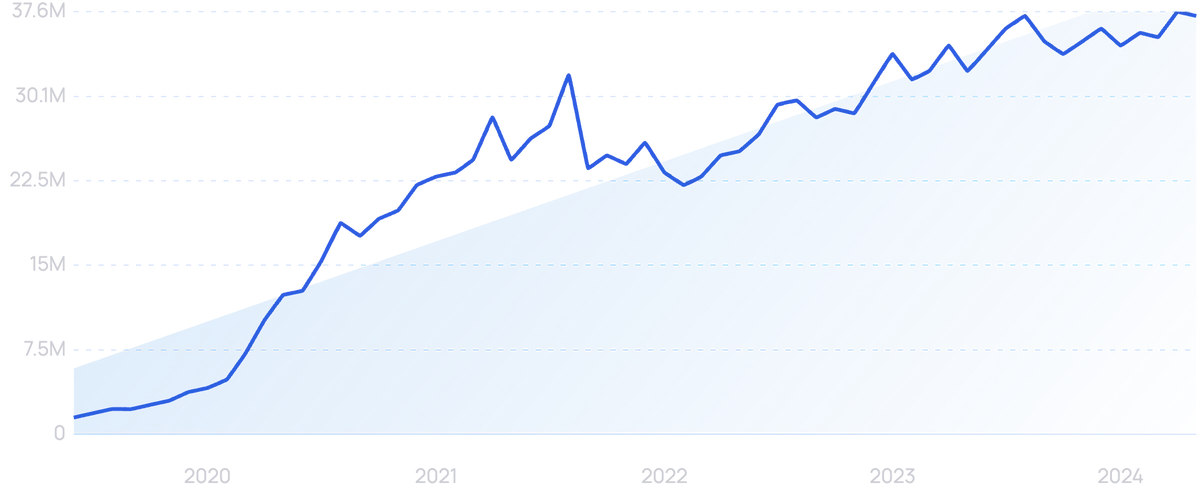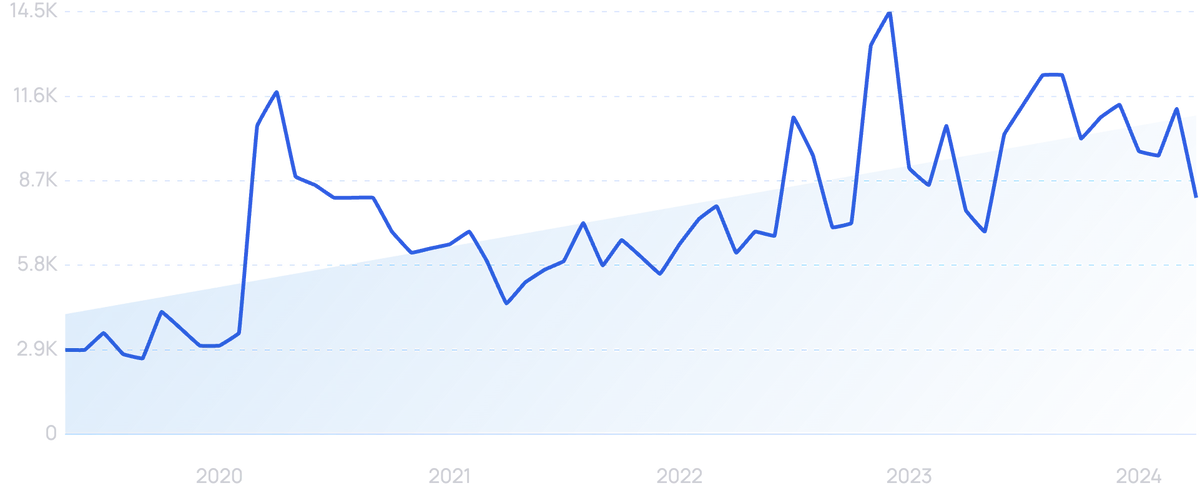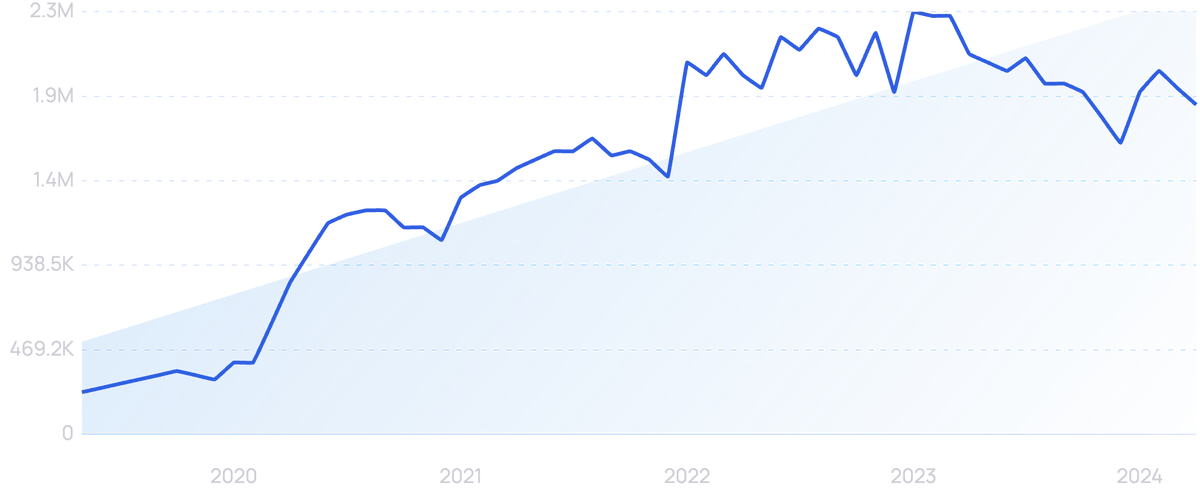
30+ Incredible Creator Economy Statistics (2024)
TikTok. YouTube. Twitch. Substack.
None of these platforms would be where they are today without the millions of creators churning out content we love. Those millions of creators and influencers are all part of the massive creator economy.
Creators, their fans, and the brands that sponsor them all contribute to an industry that’s worth billions of dollars. Perhaps the most interesting thing about the creator economy is that anyone can participate. No degree or experience is required.
But what do the raw numbers say about the creator economy?
That’s what this list of creator economy stats is all about.
- Top Creator Economy Statistics
- The Creator Economy By The Numbers
- Creator And Influencer Industry Stats
- Content Creator Statistics
- Creator Economy Platform Statistics
Top Creator Economy Statistics
The stats in this article take a look at the creator economy from several different angles. Before diving into the list, take a look at the top 6:
- There are over 200 million content creators in the world today.
- It takes content creators an average of six and a half months to earn their first dollar.
- Just 10% of influencers earn $100K or more per year.
- As of 2023, the global influencer market is valued at $21.1 billion
- European brands spent €1.3 billion on creator marketing in 2020 alone.
- 85% of full-time content creators say they enjoy their work.
The Creator Economy by the Numbers
The creator economy is huge — but how huge is it? If you’ve ever wondered just how many content creators are out there and how much they actually earn, you’re in the right place.
There are 207 million content creators in the world (Linktree)
According to the latest data, there are 207 million people who are considered “creators” in a professional sense.
Here’s a breakdown of the 207 million by follower count:
- 23 million have less than 1,000 followers.
- 139 million have between 1,000 and 10K followers.
- 41 million have between 10K and 100K followers.
- 2 million have between 100K and 1M followers.
- 2 million have more than 1M followers.
46.7% of creators are full-timers (ConvertKit)
ConvertKit’s survey of over 2,700 content creators found that almost half fell into the “full-time” category. 42.7% are part-timers while just 10.6% consider themselves “hobbyists.”
88% of creators expect to make more money than last year (ConvertKit)
Around 9 in 10 content creators believe they will earn more in 2024 than they did in 2023.
It takes content creators an average of six and a half months to earn their first dollar (The Tilt)
What does a content creator's timeline look like? Most start earning money at the six-and-a-half-month mark. At 17 months, they start earning enough to support themselves. And at 25 months, many are able to hire their first employee or freelancer.
1 in 10 influencers earn upwards of $100K per year (Influencer Marketing Hub)
What percentage of influencers actually make a decent living through content creation? Influencer Marketing Hub broke it down in their latest benchmark report:
- 26% make $1,000 or less.
- 26% make between $1,000 and $10K.
- 27% make between $10K and $50K.
- 11% make between $50K and $100K.
- 7% make between $100K and $500K.
- 3% make $500K or more.
51% of full-time content creators earn enough to support at least one person (The Tilt)
32% of full-time content creators are solopreneurs — earning enough income to support themselves. 19% are entrepreneurs earning enough to support multiple people. On the other hand, 36% earn money, but not enough to cover their expenses. 11% of full-time creators don’t earn any money at all.
52% of creators earning $50K-$100K spend 10 hours or less per week on content creation (Linktree)
Time spent creating new content doesn’t always correlate with earnings in the creator economy.
53% of creators who earn less than $100 per year also spend 10 hours or less per week on content creation. On the other hand, 48% of creators earning $100K-$500K work on content for 10 hours or more per week.
On average, male creators earn 1.88x more than female creators (InfluencerMarketingHub)
In a survey of over 2,000 creators, Influencer Marketing Hub found that male creators earn an average salary of $69,922.95 — almost double the $37,065.42 average salary for females.
Full-time creators are 4x more likely than part-timers to earn $50K or more per year (Linktree)
12% of full-time creators earn $50K or more per year compared to just 3% of part-timers. 46% of full-timers and 68% of part-timers earn $1,000 or less per year.
Around 3 in 5 beginner creators haven’t monetized yet (Linktree)
It’s hard to find overnight success in the creator economy. Only 6% of beginner creators — creators with one year of experience or less — earn over $10K per year. 35% of beginners have monetized but aren’t earning enough to quit their day jobs.
44% of content creators say their creator business is their family’s primary source of income (The Tilt)
Most creators aren’t getting rich, but they’re earning enough to keep doing what they love to do. The average annual revenue for full-time content creators is over $100,000. The median revenue is $50,000.
Creator and Influencer Industry Stats
Creators are just one aspect of the creator economy. Brands, marketing agencies, and software companies are all crucial parts of the creator ecosystem.
The global influencer market is worth an estimated $21.1 billion (Influencer Marketing Hub)
Influencer marketing is growing at a steady rate. 2023’s $21.1 billion represents a 53% increase over 2021’s $13.8 billion valuation. It’s more than an 11x increase since 2016 when the industry was worth just $1.7 billion.
Google searches for “influencer marketing” increased by 9,200% over the past 10 years.
Influencer marketing software platforms raised over $800 million in capital in 2021 (Influencer Marketing Hub)
Platforms like LTK help content creators run their businesses by giving them brand connections, cross-channel posting tools, and key metrics and analytics.
Google searches for “LTK” are up 456% over the past 5 years.
European brands spent €1.3 billion on creator marketing in 2020 alone (Adobe)
In 2016, brands in Europe spent €326 million on creator marketing. By 2020, that number more than quadrupled. From 2016-2020, European creator marketing spending increased by an average of 32% per year.
Engagement and clicks are the most important metrics for brands and marketers looking to work with influencers (Influencer Marketing Hub)
When asked which metrics matter most when working with influencers, 39% of marketers said engagement and clicks. 23% said content type and category while 21% mentioned views, reach, and impressions.
9 in 10 marketing professionals say that influencer marketing is effective (Influencer Marketing Hub)
Influencers are key players in the creator economy, and marketers are fully convinced of the ROI influencer marketing generates. 75% of marketing pros say they either have — or plan on having — a dedicated influencer marketing budget.
Content Creator Statistics
You’ve learned how much money creators earn. Now here’s a look at who creators are — how they spend their time, what aspects of creating they prioritize, and the biggest challenges they face.
Around 2 in 3 creators are women (ConvertKit)
Women make up almost two-thirds of all content creators and outnumber men by almost 2-to-1. 35% of content creators are men and 1% are non-binary.
Only 13% of content creators say making money is their top priority (InfluencerMarketingHub)
Influencer Marketing Hub’s survey of over 2,000 creators revealed some eye-opening insights into how they approach their business. One survey question was “What do you care most about as a creator?” Here’s how they responded:
- 34.9% said connecting with audiences.
- 35.3% said creating the best content.
- 16.6% said growing their following.
- 13.1% said making money.
69% of content creators say brand deals are their most lucrative revenue source (Influencer Marketing Hub)
Brand deals — which include sponsored posts — are the main money-marker for influencers and creatives, and it’s not even close. The next highest revenue source is ad share revenue, which only 7% of creators say is their most lucrative income stream.
7 in 10 creators spend 10 hours or less per week creating content (Linktree)
How much time do creators spend making new content? Here’s the breakdown from Linktree’s recent survey:
- 5% spend 40+ hours per week.
- 9% spend 20-40 hours per week.
- 16% spend 10-20 hours per week.
- 27% spend 5-10 hours per week.
- 36% spend 1-5 hours per week.
- 7% spend an hour or less per week.
85% of full-time content creators say they enjoy their work (The Tilt)
When asked about the benefits of running a content creation business, 85% of creators mentioned work enjoyment. 82% mentioned the independence of running their own business. 80% listed flexible work hours as a top perk.
Getting their content found is creators’ top challenge (The Tilt)
When asked about their top challenges as content creators, 54% of full-timers and 60% of part-timers say “making sure my content gets found”. Other common challenges are monetization, marketing, and sticking to a regular publishing schedule.
Creator Economy Platform Statistics
No matter what you create, there’s a platform out there to connect you with an audience. Some platforms like YouTube and Instagram have been around for over a decade. Others like Twitch and Substack have opened new doors for creators and their fans.
Around 7 in 10 marketers use Instagram for influencer marketing (HypeAuditor)
Instagram is the hands-down favorite for influencer marketers, and it’s easy to see why. Nearly half (48%) of global Instagram users are Millennials between 25-34 — a key demographic for influencer marketing.
Micro-influencers (5K-20K followers) make up 44% of all Instagram creators (HypeAuditor)
Micro-influencers are the largest group of creators on Instagram. The next-largest group is nano-influencers — those with 1K-5K followers — at 28%. Less than half a percent of Instagram creators have over a million followers.
There are over 1.5 million creators on OnlyFans (OnlyFans)
OnlyFans’ userbase has exploded since launching in 2016. Today, there are over 1.5 million content creators and 150 million registered users. The platform currently pays over $5 billion to its creators every year.
Searches for “onlyfans” is up 2,375% over the last 5 years.
There are 2.44 million viewers watching Twitch live streams at any given time (TwitchTracker)
In 2023, there was an average of 2.44 million concurrent viewers watching streams on over 95,000 live channels. That breaks down to over 25,000 viewers per channel on average.
Users consumed over 6 billion hours of content on Twitch in the first quarter of 2022 alone (Streamlabs)
Gaming streamers are content creators too, and their platform of choice is undoubtedly Twitch. 76% of all live streaming viewing hours in Q1 2022 were on Twitch, and 91.5% of all live-streamed content originated on the platform.
Google searches for “live streaming platform” are up 180% over the past 5 years.
The average Patreon user makes 41% of their income on Patreon (Patreon)
There are over 250,000 creators currently on Patreon. 56% of those creators consider themselves seasoned veterans. For most Patreon creators, revenue from Patreon itself makes up the largest portion of their income by far — more than commissions, ad revenue, coaching, and brand sponsorships combined.
There are over 7.5 million active sellers on Etsy (Etsy)
Independent creators who make and sell physical goods are part of the creator economy too, and Etsy is their top platform. Etsy’s top seller is jewelry maker CaitlynMinimalist, which gets more than 30,000 sales per month.
Substack has over 1 million paid subscribers (Substack)
The creator economy is known for its visual aspects. But there’s plenty of demand for written content, too. Substack lets creators publish newsletters and serialized novels through a paid subscription model. The platform hit 1,000,000 paid subscribers in November 2021.
Over 25 million creators have a Linktree account (Linktree)
Aside from hashtags, “link in bio” is likely the most common phrase used by content creators in their captions.
More often than not, that link directs to their Linktree bio, which acts as a central hub for multi-channel creators.
Linktree’s explosive growth on Google over the past 5 years.
Linktree receives 259 million monthly visits (May 2025, Exploding Topics data).
Wrap Up
In 2024, anyone with a passion and a smartphone can join the creator economy. While nobody’s guaranteed success, anyone with enough drive and creativity can participate.
A generation ago, earning $100,000 or more creating online content was a rare feat. Today, millions of people are doing it. As long as there are platforms to connect creators with audiences, the creator economy will keep on thriving.
For more related content, check out Freelance Statistics, Trends and Insights, and Remote Work Trends.
Stop Guessing, Start Growing 🚀
Use real-time topic data to create content that resonates and brings results.
Exploding Topics is owned by Semrush. Our mission is to provide accurate data and expert insights on emerging trends. Unless otherwise noted, this page’s content was written by either an employee or a paid contractor of Semrush Inc.
Share
Newsletter Signup
By clicking “Subscribe” you agree to Semrush Privacy Policy and consent to Semrush using your contact data for newsletter purposes
Written By


Josh is the Co-Founder and CTO of Exploding Topics. Josh has led Exploding Topics product development from the first line of co... Read more



